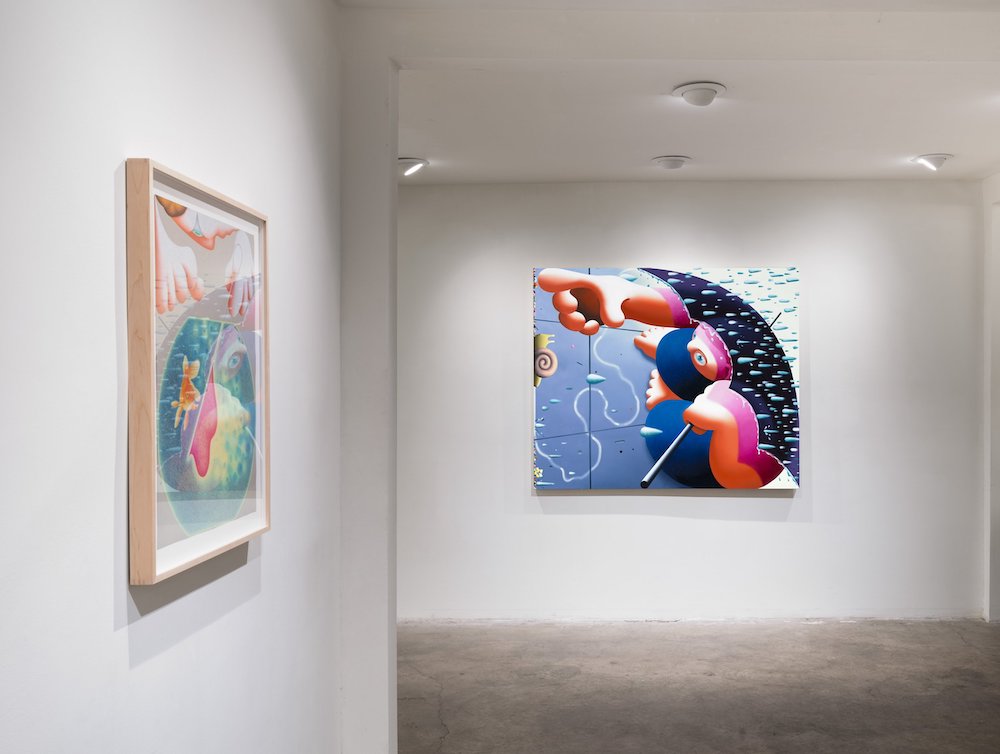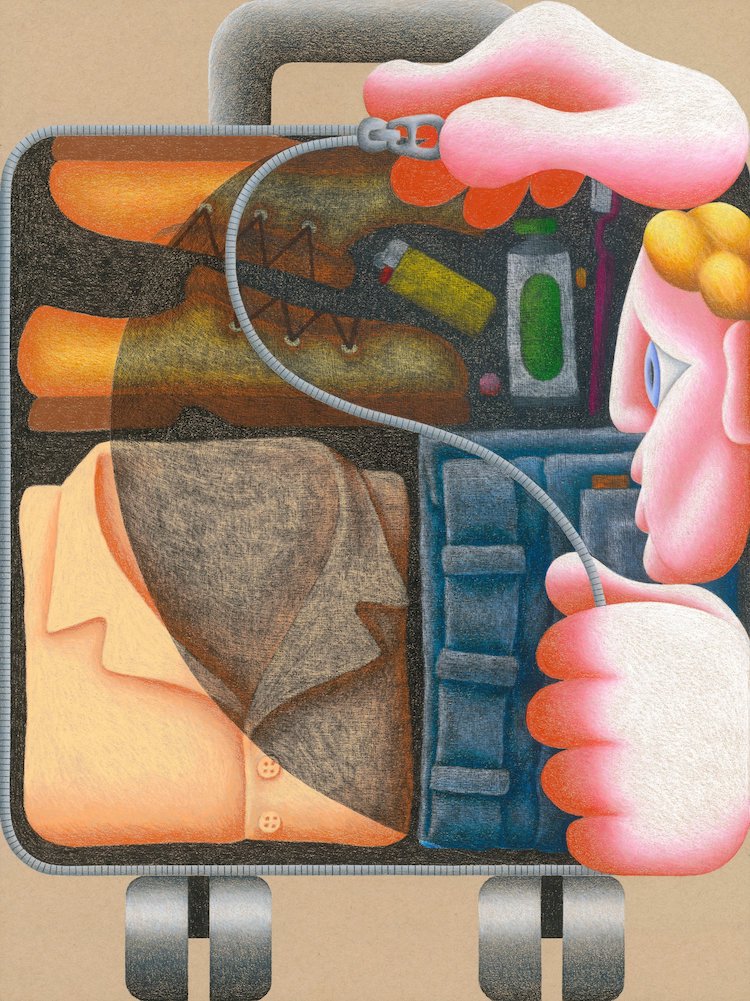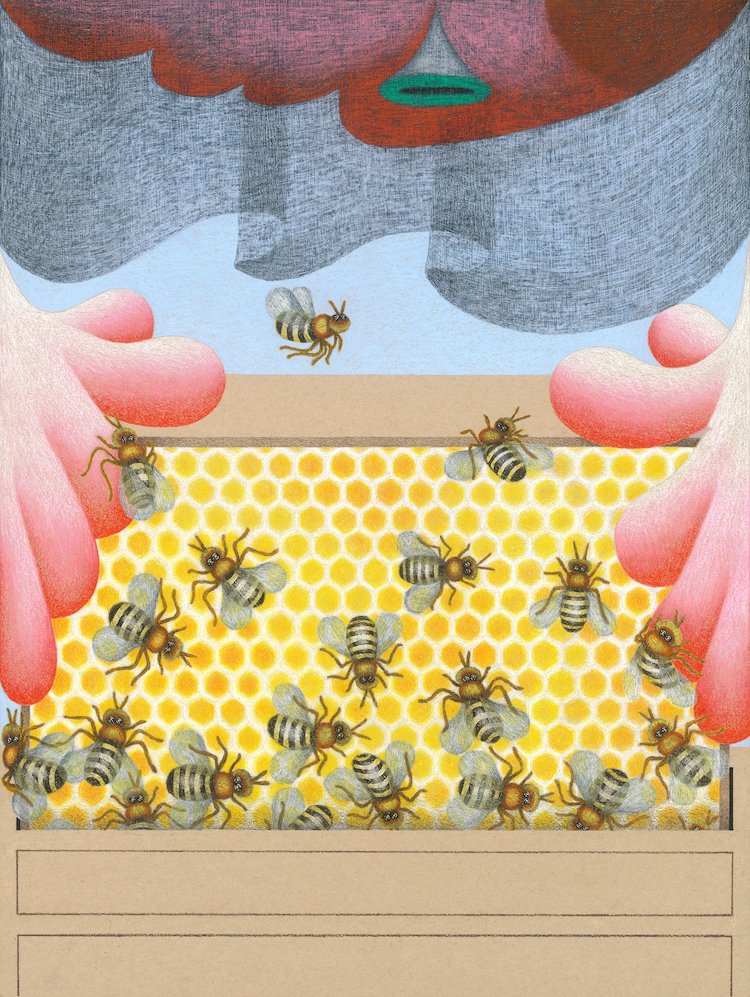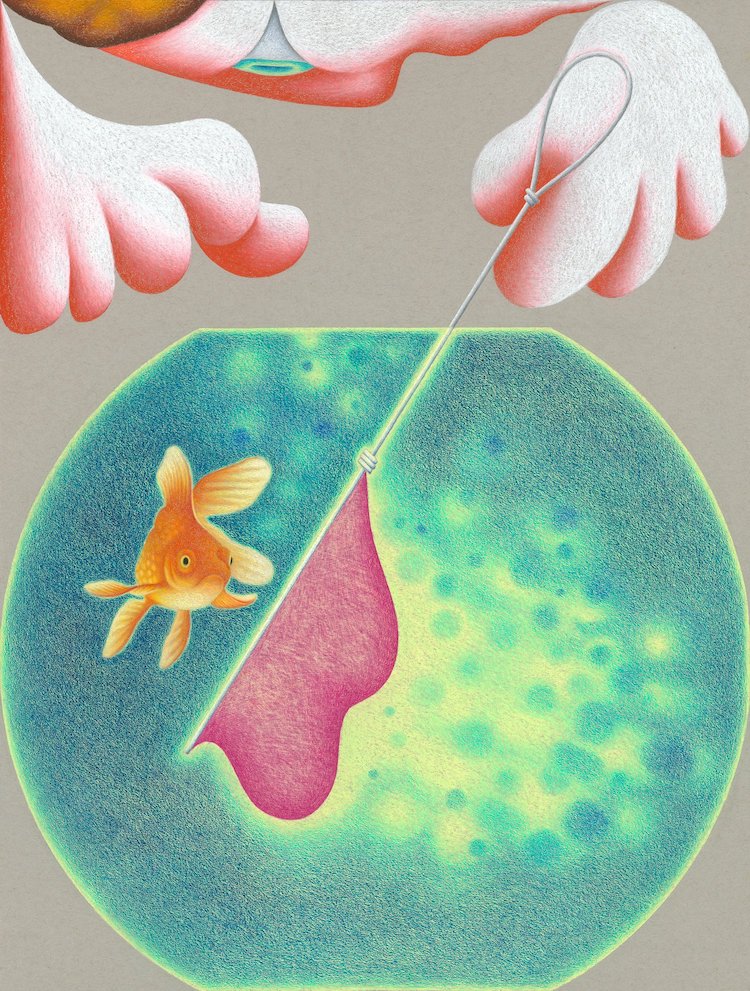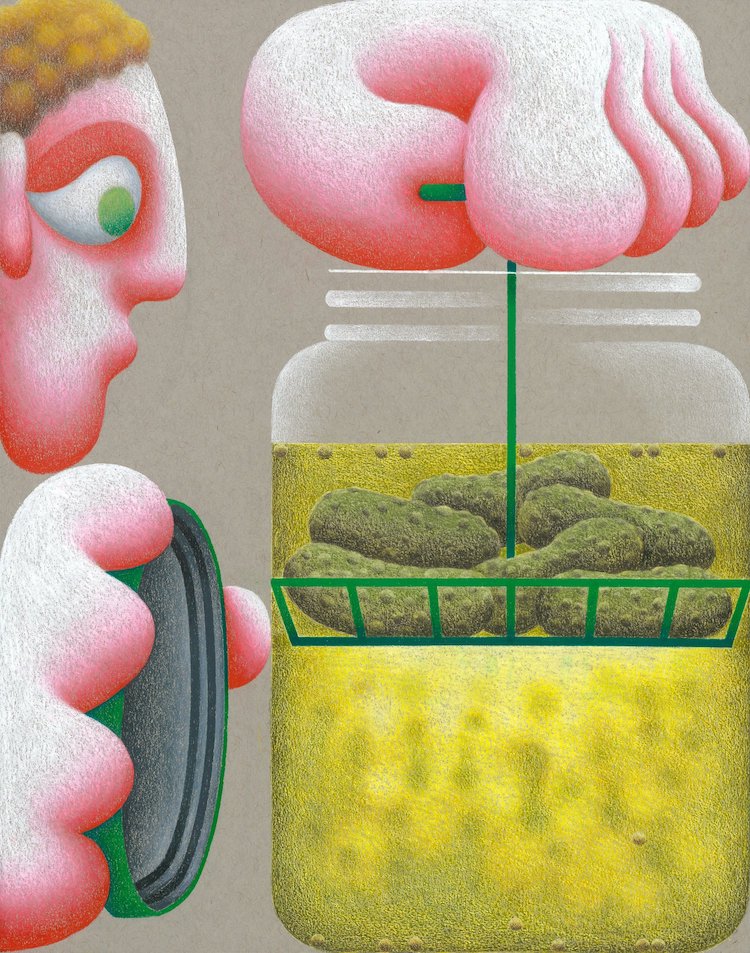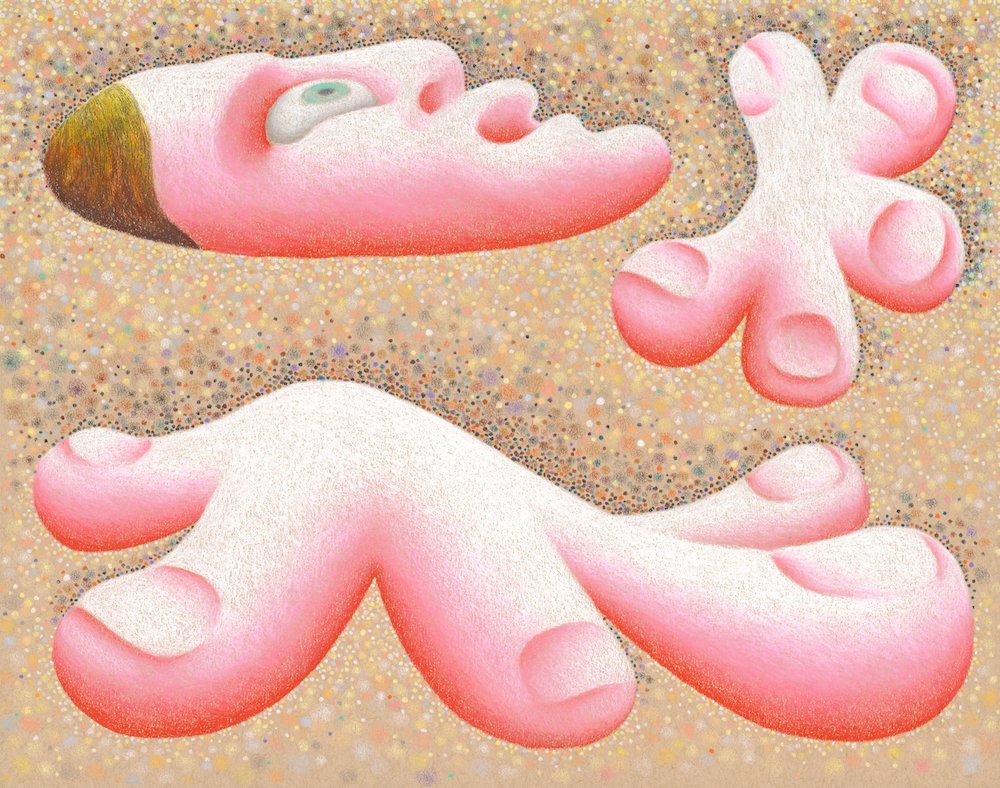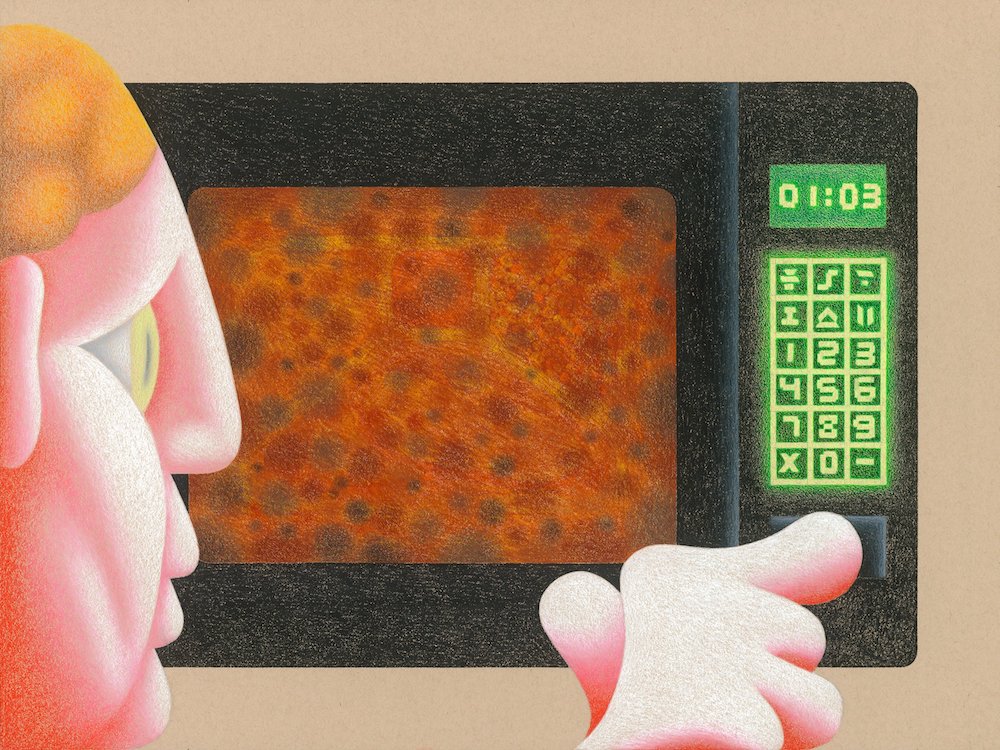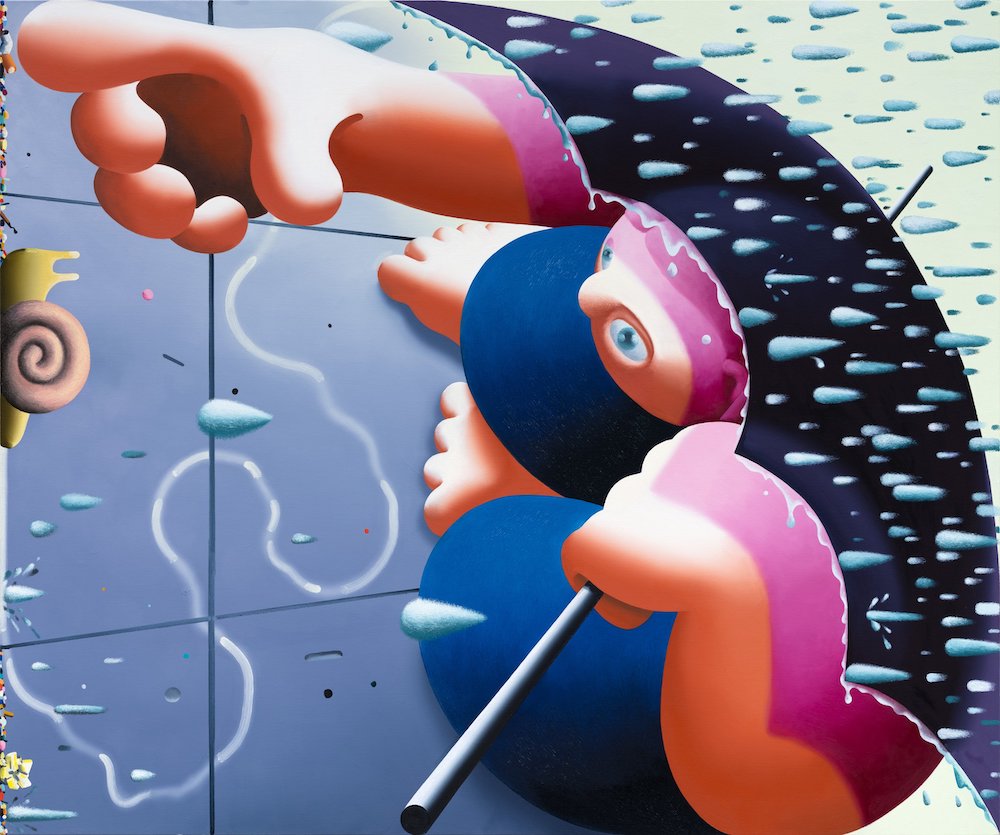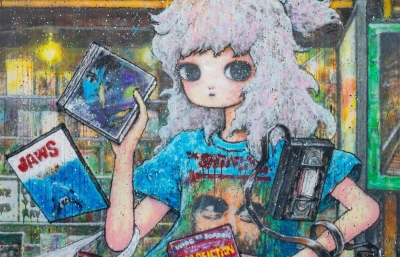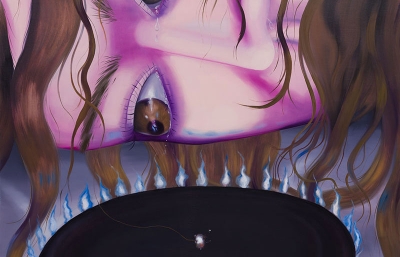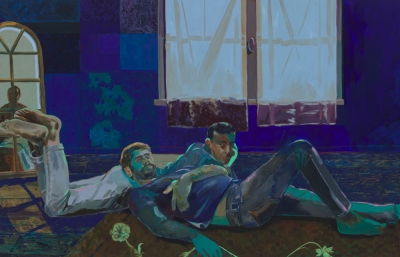Moskowitz Bayse is pleased to present Compartmentalizing, an exhibition of new works by Brooklyn-based artist (and former Juxtapoz Projects artist) Eleanor Swordy. The occasion marks the artist’s fourth solo presentation at the gallery, and will be installed in our Viewing Room through February 4, 2023.
In Compartmentalizing, the seven drawings and one painting on view offer explorations of sensorially heightened moments mined from observation and ordinary routine. Here, the artist continues to hone the formal and technical potential of her respective mediums; her method of scratching into successively applied layers of material, for instance, has evolved from a textural element to one that mutably defines opacity, form, and volume across works. Meaning emerges slowly through collective experience, humor, and earnest references to art history.
Physical laws of Swordy’s own creation are defined such that perspective, composition, and detail function together as keystones of narrative, suggestions of space, and conveyors of mood. With drawing as with painting, the artist and viewer are informed by the medium’s intrinsic materiality such that the work’s content and subjects are defined through it. To us, the fishbowl in Catching is necessarily spherical; to the artist’s fish and her would-be captor, bowl, water, and net exist firmly in two dimensions, linked as much by those incontrovertible qualities as by their shared participation in an ominous dance. In Quicksand, a hapless subject gasps with looming finality as the ground absorbs them, while varied grains of rock, sand, and toned brown paper coalesce at the surface conspiring to swallow the figure into an inescapable vortex.
The artist often isolates her subjects just as they precisely occupy their surroundings, emphasizing moments simultaneously caught between before and after. This humble instant, just before the microwave in Reheating flings open to reveal dinner–perhaps splattered, perhaps intact–becomes the very enterprise of looking, longing, and apprehending the vagaries of the present toward that rare condition of existing entirely within it. Swordy’s hightented modes of seeing, of marshaling material, form, and synesthetic experience into visual language, afford us the opportunity to rediscover and consider these marginalia. Fortunate then, that she invites us to join the protagonists in Drive-In during its climactic scene.



